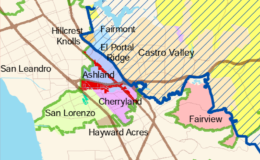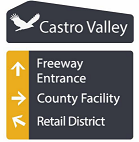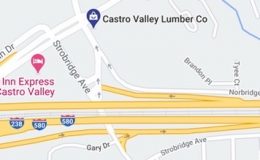Off price retailers is a great idea for the Daughtry Building, keep the business here in our town.
As redevelopment dissolution wraps up, Daughtrey’s back on MAC agenda
- By : Michael Kusiak
- Category : Alameda County, Economic Development, Governance, HARD, Local Control, MAC, State of California
 The Castro Valley Municipal Advisory Council (MAC) meets on Monday, April 20, 2015 to hear an update from David Greensfelder on his plans for the long-vacant Daughtrey’s building.
The Castro Valley Municipal Advisory Council (MAC) meets on Monday, April 20, 2015 to hear an update from David Greensfelder on his plans for the long-vacant Daughtrey’s building.
The former Alameda County Redevelopment Agency purchased the building for $2.7 million in 2011. In June 2014, Alameda County entered into a Disposition and Development Agreement (DDA) with Greensfelder to sell him the former department store building for $860,000. The on-going delay in the transfer and redevelopment of the building stems from the complexity of the redevelopment agency dissolution process. In fact, technically, the county does not even own the building to sell it to Greensfelder.
Redevelopment and Dissolution in California
Since 1945, redevelopment agencies in California were able to create a revenue stream to finance the purchase of properties though the diversion of property taxes in a given “redevelopment area.” Once a designated area became a “redevelopment area”, the government agencies that previously received a portion of the collected property taxes for that area would continue to do so; however, any new revenue above and beyond the amount collected before this redevelopment status would be transferred to the local redevelopment agency.
In an effort to balance depleted State and local government budgets during the “Great Recession,” the State of California dissolved redevelopment agencies in 2012 in order to transfer tax increment finance revenue generated by these districts to cities, counties and other government districts (like CVUSD and HARD).
As part of redevelopment dissolution, the assets and obligations of the redevelopment agencies were transferred to “successor agencies” to manage the sale of assets and distribution of revenues to the “taxing entities” (e.g. special districts, school districts, and community college districts), the government agencies relying on these funds to make up for lost revenues during the recession and California’s budget crisis.
Daughtrey Building and Redevelopment Dissolution
When the Alameda County Redevelopment Agency was dissolved, its assets, including the Daughtrey building, were transferred to Alameda County’s Successor Agency. The Successor Agency is technically independent of Alameda County, and is governed by a board with representatives from the taxing entities that will receive compensation upon the sale of the Successor Agency assets. Members of the Successor Agency board include Alameda County Supervisor Nate Miley and Castro Valley Unified School District Board of Education Member John Barbieri.
Two critical events need to take place before Greensfelder can purchase and redevelop the building.
First, the affected taxing entities need to agree to how they will be compensated upon the sale of the former redevelopment agency properties. According to Eileen Dalton, who staffs the Successor Agency, she is aiming to have these agreements in place by May 1. As the State of California Department of Finance has approved the Successor Agency’s Long-Range Property Management Plan (LRPMP), once these compensation agreements are in place, the transfer of property to direct Alameda County control can happen relatively quickly.
Secondly, Greensfelder needs to meet certain conditions as set forth in the DDA’s “Schedule of Performance” (Exhibit C), such as obtaining land use approvals from the county, developing final construction drawings, and securing financing. Per the DDA, the conditions of the Schedule of Performance must be met by December 31, 2015. The DDA also obligates Alameda County to build the shared parking lot behind Knudsen’s Ice Creamery and the Daughtrey building that was first conceived by the former Redevelopment Agency. In fact, the Board of Supervisors held an initial budget hearing on April 7, where the Community Development Agency reported that it is including the funding for the shared parking project in its 2015-2016 budget.
Once the building is sold, the DDA includes provisions to reduce the likelihood of off-price retailers in the former Daughtrey building.
What does Castro Valley want?
The MAC meeting on Monday, April 20, 2015 includes an update and Q&A with Greensfelder. The meeting gives Castro Valley its first opportunity to articulate what it would like to see happen at the site since Castro Valley Matters proposed the town square project.
How would you like to see the Daughtrey building redeveloped? Share you thoughts below, on Facebook, or Twitter. Join in the conversation on twitter during the MAC meeting with #MACmtg


